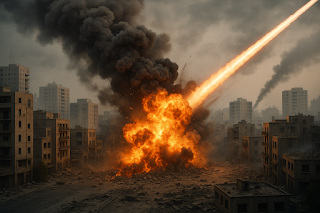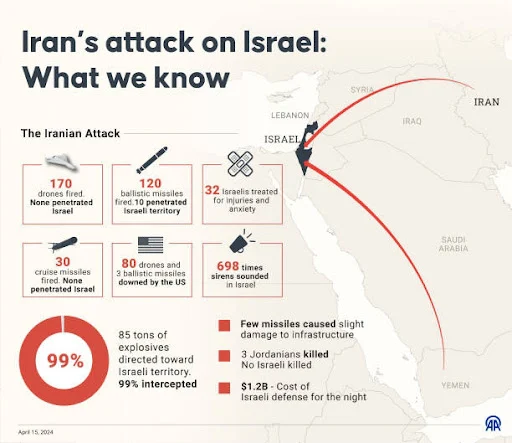Trump’s Sudden Ceasefire Between Israel and Iran: Tactical Pause or Strategic Surrender?
In a shocking geopolitical turn, former U.S. President Donald Trump—widely known for his hardline stance against Iran and unwavering support for Israel—has brokered a sudden and fragile ceasefire between Israel and Iran. While the world breathes a cautious sigh of relief, the dynamics behind this ceasefire reveal a much deeper and dangerous game of strategic diplomacy, military brinkmanship, and global economic pressure.
This article dives deep into the events that led up to this moment, the forces at play behind the scenes, and what this ceasefire truly means for the Middle East and the world at large.
The Spark: Iran Fires 12 Missiles at US Base in Al-Udeid

The conflict escalated sharply when Iran launched 12 ballistic missiles targeting the U.S. Al-Udeid Air Base in Qatar—a central operational hub for American forces in the Middle East. According to official U.S. sources, most of the missiles were successfully intercepted by the U.S. THAAD and Patriot missile defense systems, with minimal to no reported casualties.
However, Tehran challenged this claim, asserting that at least four missiles struck the base, damaging infrastructure and injuring personnel. Iran's Islamic Revolutionary Guard Corps (IRGC) declared the attack as a direct retaliation to “Operation Midnight Hammer”, a U.S.-Israel coordinated cyber strike believed to have targeted Iranian nuclear facilities just days earlier.
Iran Denies Interceptions and Continues Missile Barrage
Far from being deterred, Iran rejected U.S. interception claims and continued its missile campaign, striking at symbolic and strategic military targets across the Gulf—particularly in Kuwait and Bahrain.
Israel responded almost instantly, launching its own precision airstrikes under “Operation Rising Lion,” primarily aimed at missile launch sites and supply chains in western Iran. This rapid-fire exchange dragged the region into the most dangerous tit-for-tat escalation seen since the Gulf War.
For several days, the Middle East was at the edge of a full-scale regional war, with Iran and Israel seemingly locked in a death spiral—neither showing signs of backing down.
A Ceasefire That Might Cost Israel Long-Term Strategic Interest

The sudden ceasefire announcement by Trump came as a surprise not only to Iran and Israel but also to American intelligence and defense officials. What raised eyebrows globally was the lack of coordination with Tel Aviv, and how it potentially undermines Israel’s long-term strategic objectives.
Israel’s military leadership and political establishment were reportedly furious behind closed doors, as this halt prevented them from delivering a final and possibly decisive blow to Iranian military infrastructure. Many Israeli hawks now fear that this ceasefire allows Iran to regroup, rearm, and accelerate its nuclear ambitions without immediate consequences.
Iran Claims It Is Ready for a Prolonged War
In contrast, Iran’s leadership has welcomed the ceasefire with caution. Supreme Leader Ayatollah Khamenei publicly stated that “Iran is prepared for a 2–6 month war”, boasting of deep military stockpiles, underground missile systems, and the backing of "global allies against imperialist pressure.”
This rhetoric signals not peace, but preparation. Iran appears to be playing a long game, using this pause to realign its military assets and bolster its nuclear program under the guise of defensive capability.
“Operation Rising Lion”: Israel’s Bold Play for Regime Change
Israel’s counter-offensive, Operation Rising Lion, had two clear objectives:
1. Regime destabilization: By targeting military and communication infrastructure around Tehran and key cities, Israel hoped to weaken the IRGC's grip and encourage internal dissent.
2. Targeting nuclear sites: Intelligence suggests Israel focused heavily on Natanz, Fordow, and Arak—the heart of Iran’s nuclear enrichment program.
The operation was rapidly gaining momentum, and many believe Israel was mere days away from crippling Iran’s nuclear capabilities, had the ceasefire not been enforced. This fuels the belief that Trump’s ceasefire may have prevented a regime change at the 11th hour.
Oil, Inflation, and the Strait of Hormuz: The Economic Trigger
Amid the military drama, another critical element was silently dictating international pressure: oil economics. As the Strait of Hormuz—a narrow passage that handles over 20% of the world’s oil trade—became a potential battleground, the stakes rose exponentially.
Iran had threatened to block the strait in response to Israeli aggression. This move could have led to oil prices spiking past $150 per barrel, driving global inflation and threatening the fragile U.S. economic recovery.
Countries like India and China, both heavily dependent on Gulf oil, reportedly warned the U.S. through backchannels, urging Trump to de-escalate the situation. An economic blow to American consumers—especially during an election year—was a risk Trump could no longer afford.
Both Iran and Israel Reject US-Centric Ceasefire Narrative

Interestingly, both Tehran and Tel Aviv have publicly rejected claims that they were directly consulted or influenced by the U.S. in arriving at the ceasefire.
Israel insists the decision was made unilaterally by the U.S., possibly to avoid a full-scale war with Iranian allies. Iran, on the other hand, claims victory, framing the ceasefire as a result of its “military deterrence and regional resistance”
This mutual denial suggests that neither side is truly committed to long-term peace, and both are likely using this truce as a temporary breathing space.
Why Trump Backed Off at the Brink of Regime Change
Many observers ask the million-dollar question: Why did Trump back off at the edge of regime change?
Just days before the ceasefire, Israeli commandos were reportedly preparing for a joint operation with U.S. cyber forces to paralyze Iranian leadership communication. Sources say Trump personally authorized expanded targeting, signaling that a bold new phase had begun.
However, a mix of pressure from the oil lobby, foreign governments, and concerns about escalation with Russia led to a dramatic U-turn. With an eye on domestic stability and re-election optics, Trump may have decided that a temporary peace is better than a drawn-out war with unpredictable consequences.
The Shadow Alliance: Russia, China, and South Korea Back Iran
Adding another layer of complexity is the role of external powers backing Iran. Behind closed doors, sources indicate that Russia and China have ramped up cooperation with Tehran, not just diplomatically, but technologically and militarily.
Russia has allegedly supplied missile defense upgrades, while Chinese engineers may be assisting in rebuilding bombed-out nuclear centrifuges. Even South Korea, though officially neutral, has sent humanitarian and “energy support,” which many analysts interpret as soft diplomatic backing.
If true, this represents a new Cold War front—a multipolar alliance forming quietly behind Iran to challenge U.S.-Israeli dominance in the Middle East.
Conclusion: Ceasefire or Countdown to the Next Clash?
The Trump-brokered ceasefire might have paused the missiles, but it has not resolved the underlying conflict. Both Israel and Iran remain committed to their ideological, strategic, and military goals. The U.S. may have dodged a regional war, but it also may have sacrificed credibility and leverage in favor of short-term economic and political stability.
As the Middle East simmers under this uneasy silence, the world watches nervously—knowing that in geopolitics, the calm before the storm is often the most deceptive phase of all.
By Pratik Kondawale | The GeoLens – Global Affairs & Insights.
Follow The GeoLens for real-time updates, unbiased, and expert coverage of global conflicts
Published on: 25th June 2025
















